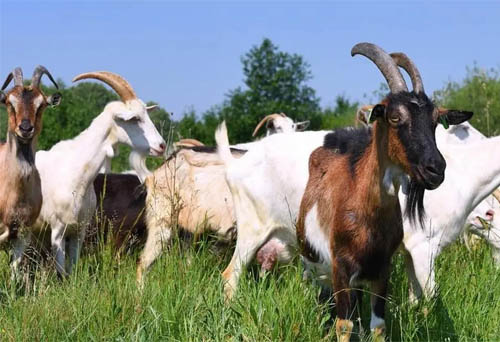Accurately detecting pregnancy using sheep ultrasound scanner: Applications in sheep farms
With the global rise of the concepts of “smart animal husbandry” und “digital ranching,” the sheep industry is transitioning from an experience-driven to a data-driven approach. Traditional palpation and blood tests, with their limitations such as detection delays, high rates of misjudgment, and increased animal stress, are no longer able to meet the dual demands of efficiency and refined management in modern large-scale farming. Using specialized sheep ultrasound scanner allows for “Früherkennung einer Schwangerschaft, comprehensive monitoring, and multi-dimensional health management,” helping farmers achieve lower costs and higher yields, ushering in a new era of intelligent flock management.

Why choose a sheep ultrasound scanner pregnancy testing?
Early and accurate pregnancy testing: Confirming pregnancy within 30–35 days is faster and more accurate than traditional palpation, improving breeding success rates.
Real-time, non-invasive imaging: A linear probe gently touches the abdomen, eliminating radiation and chemical reagents. Testing is completed in minutes, reducing stress for both ewes and lambs.
Multi-dimensional health monitoring: Supports ultrasound imaging of multiple parts of the body, including the uterus, Herz, Leber, Nieren, and eye muscle fat. One device can be used for multiple purposes to detect signs of disease in a timely manner.
Four Key Benefits of Flock Management:
Improve breeding efficiency. Accurately determine conception status and fetal development, optimize feed ratios and group management, and increase breeding efficiency by over 10%.
Reduce breeding costs. Avoid blind investment in non-pregnant or weak individuals, reduce feed and veterinary expenses, and achieve a short-term return on investment.
Improve herd health. Early diagnosis of common diseases such as metritis and peritoneal effusion allows for timely intervention and treatment, reducing mortality and ensuring flock health.
User-friendly and portable. The lightweight main unit, long-arm glove, and dedicated linear probe are suitable for various environments, including sheep sheds and pastures. The simple interface and automatic optimization allow for independent operation after one day of training.
Non-invasive real-time monitoring eliminates health risks.
Non-invasive examination: The probe is gently placed on the abdomen. The entire process takes 3–5 minutes. No radiation or chemical reagents are used, and stress reactions for ewes and lambs are minimal.
Multi-site imaging: Supports ultrasound imaging of the uterus, Herz, Leber, Nieren, and dorsal fat of the eye muscles, enabling multi-purpose use in one device. This allows for early detection of metritis, peritoneal effusion, and cardiomyopathy, while improving treatment response by 30%.
The integrated, portable design allows for use in both pastures and sheep sheds.
Lightweight main unit: Weighing less than 2.5kg, it comes with a battery and waterproof linear probe, making it suitable for a variety of environments, from indoor sheep sheds to open pastures.
Intelligent interface and automatic optimization: A touchscreen interface with a graphical menu and automatic gain/contrast optimization allows for mastery of the device with a single training session, making it ideal for both primary care veterinarians and livestock breeders.
How long after giving birth can ewes receive ovulation injections?
Many breeders want to know the exact time to administer ovulation injections to ewes after giving birth. After all, this affects the success rate of the ewe’s next pregnancy and the overall reproductive efficiency of the flock.
The second estrus period is more appropriate.
After giving birth, a ewe’s body needs time to recover. Although the first estrus may occur around 20 days after giving birth, the uterus has not yet recovered from the birth. Experienced breeders will observe that the ewe’s uterine wall is relatively thin at this time, and the internal environment is not ideal for the fertilized egg to settle down. Just like a person needs confinement after giving birth, the ewe’s uterus also needs to breathe.
The success rate is higher around 40 Tage.
Um 40 days after giving birth, the ewe typically enters its second estrus period. Zu diesem Zeitpunkt, her physical condition has significantly improved, and her ovarian function has returned to normal. Ovulation injections can help the ewe release higher-quality eggs, significantly increasing the chances of fertilization. Some farms have conducted statistics and found that eight out of ten ewes bred during this time period will only conceive.
Ultrasound observation of sheep can help identify the right timing.
Many farms now use veterinary ultrasound machines to monitor follicular development. Zum Beispiel, the Boxianglai BXL-S101 can clearly show when follicles mature and rupture. Using the screen to pinpoint the optimal time before ovulation, administering the injection provides a double insurance policy for conception. This method is particularly suitable for large-scale farming, as it reduces feed waste from empty lambs and helps maintain a regular lambing rhythm.
Preparing for pregnancy after lambs are weaned
Recently born ewes are busy nursing, and rushing them to conceive at this time can be physically taxing. It’s safer to administer ovulation injections after the lambs are weaned, around two months old, and their weight and nutritional status have recovered. Some thoughtful farmers also provide the ewes with a nutritious diet, such as soybean meal and alfalfa, to build a healthy physique.
Don’t rush to use hormones to stimulate estrus.
Some ovulation-stimulating drugs on the market work quickly, but using them too early can have harmful effects. Giving ewes triple hormones twenty days after giving birth will cause 90% of ewes to go into estrus, but few will actually conceive. Just like prematurely ripened fruit doesn’t taste sweet, premature intervention can overload the ewe’s reproductive system.